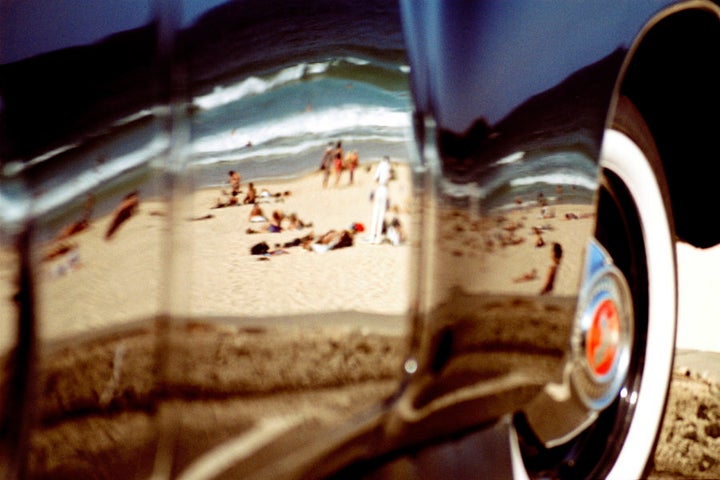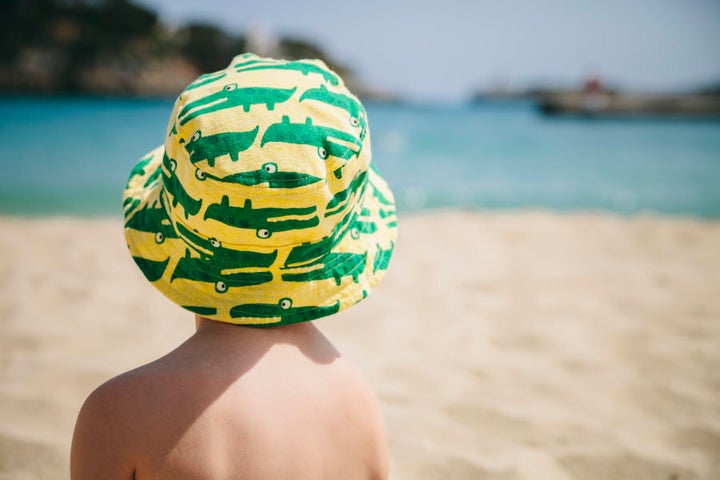
Australia has one of the highest incidences of skin cancer in the world.
Perhaps you've heard that before and it doesn't jolt you. Does the fact that about 15,000 new melanomas were diagnosed in Australia last year dig into your skin?
This isn't even the full story.
"When you hear that figure, it's actually only talking about invasive melanomas that penetrate into the collagen layer of the skin. There's about three times that number of in situ melanomas that are just in the superficial layer of the skin," clinical associate professor and dermatologist Saxon Smith told The Huffington Post Australia at a Banana Boat media event in Melbourne.
You would think that with one of the highest rates of skin cancer in the world, we would be good at this. We lag behind the rest of the world.
"The rate of melanoma in Australia continues to rise, year on year -- that's above and beyond population figures. Non melanoma cancers are also very important as they are much more common and equally as disfiguring. We know that both can kill."
Despite this, our behaviours and attitudes towards sun protection continue to fail us.
"You would think that with one of the highest rates of skin cancer in the world, we would be good at this. We lag behind the rest of the world," Professor Smith said.
"On average, we use three times less as a population than Spain and half of what Austria, Switzerland or Denmark use. And they don't have the environment that we do," Smith said.
According to new research conducted by Professor Smith and his team at Royal North Shore Hospital, 94 percent of the study's 416 respondents aged 18-30 years had experienced at least one episode of sunburn in the previous year. Thirty percent reported not applying sunscreen before sun baking, while 35 percent of all participants reported having had skin cancer.
And only 15 percent used the recommended amount of sunscreen.
We all know that we need to 'slip, slop, slap'. But we become apathetic towards it.
"We aren't actually using enough on a regular basis to get the protection that we think we're getting."
Herein lies the problem, and the focus of Professor Smith's research that aims to extend prevention education beyond the sun care message many Australians have grown up with and sidelined.
"We all know that we need to 'slip, slop, slap'. But we become apathetic towards it. And they keep adding s's which just complicates the message even more," Professor Smith said.
"What this message doesn't tell us is how...If you are doing all these things, how are you doing them and are you doing them correctly?"
The short answer? No. And research tells us that our deficiencies can be age and gender-specific.
What you didn't know

Sunscreen has a use-by date.
"I started my research by asking my patients simple things like 'have you checked the expiry date of your sunscreen?' I kept getting back, 'sunscreens have any expiry date?" Professor Smith said.
Yes, they do and they are stamped on sunscreen bottles to specify the time limit of the product's stability and efficacy.
According to his research, 36 percent of respondents rarely or never checked their sunscreens' expiry, with 65 percent unaware that its efficacy can also be affected by where it is stored.
Sunscreen cooks (and is denatured) by heat.
Which brings us here.
"People aren't aware that if you store your sunscreen above 25 to 30 degrees -- depending on the product -- for prolonged periods of time, you can actually start to affect the sunscreen," Smith said.
Sunscreens have to be stable at up to 40 to 45 degrees. But an Australian car can reach up to 60 to 70 degrees in autumn or spring, let alone summer.
Cast your mind back to Matt Moran baking a lamb in a hot car to highlight the risks posed to shut-in kids. The logic is similar: sunscreen can also cook.

"On the whole, sunscreens have to be stable at up to 40 to 45 degrees. But an Australian car can reach up to 60 to 70 degrees in autumn or spring, let alone summer," Professor Smith said.
"We did some testing last summer and found that cooking it at 50 to 60 degrees decreased the SPF of the sunscreen by about 40 percent over a period of three weeks."
You may use sunscreen but you're probably not using enough of it.
Imagine you are holding a golf ball in your hand. Now, turn this into a handful of sunscreen.
This is the amount that we should be applying (35-40ml) in one sitting and is derived from that required to cover the average body surface area of an adult at the recommended (and SPF tested) thickness of 2 milligrams per squared centimetre.
If you apply half of the recommended dose, you are only applying less than half of the SPF that you think you are getting.
According to Professor Smith's research, 85 percent of respondents were in the dark.
"Most elected, on a whole, half of the amount that they should be putting on," Professor Smith said.
"If you apply half of that, you are only applying less than half of the SPF that you think you are getting. So whilst you may think that what you are doing is right, you're not actually receiving as much sun protection."
And when it comes to reapplication, 20 percent reported never slopping on another layer after swimming or sweating.
UV rays don't take holidays.
Okay, so you've certainly heard this one before, but it needs to be said.
Smith's research showed nearly all participants reported utilising sunscreen in summer, with the frequency of application being much lower (between 24 and 49 percent) for all other seasons.
"There are differences in how intense they are, but they're still there," Professor Smith said.

All results probe the need for further targeted education. For young Australians, this means looping in family behaviours.
We know that there are differences between what parents do for themselves and what they do for their children.
"This is a family thing. What we forget is that the modelling behaviour that children follow is what they see us -- their parents and teachers -- do. And they take that into their teenage years," Smith said.
"We know that there are differences between what parents do for themselves and what they do for their children. We need to be flipping the 'no hat, no play' message on its head and encouraging kids to do the things that they love safely and on a daily basis.
"We are all at risk of skin cancer and we need our sun protection message to highlight all of those missing gaps."
Click below to follow HuffPost Australia on Snapchat!
